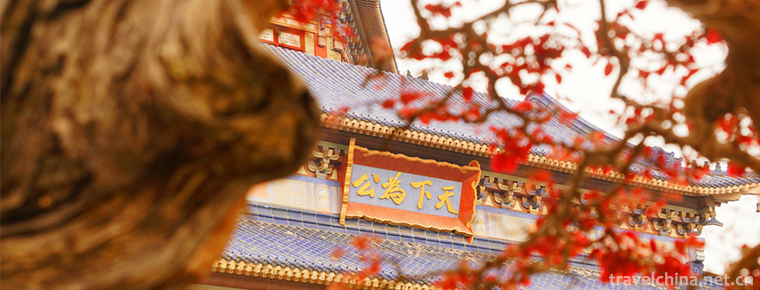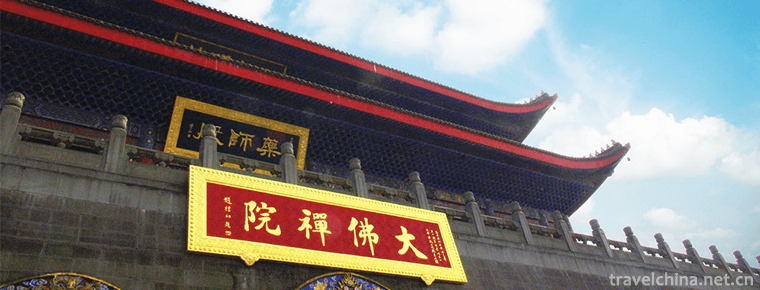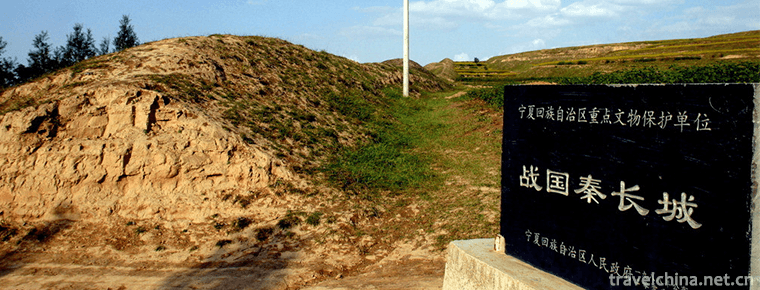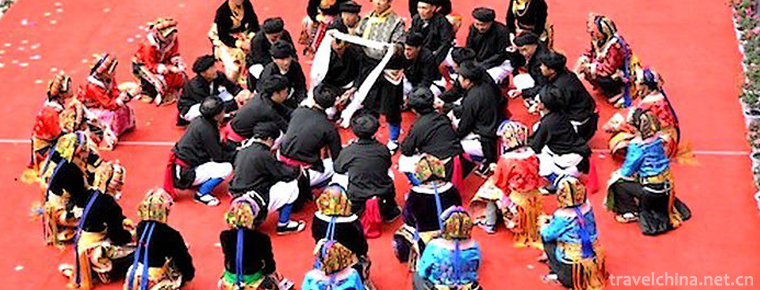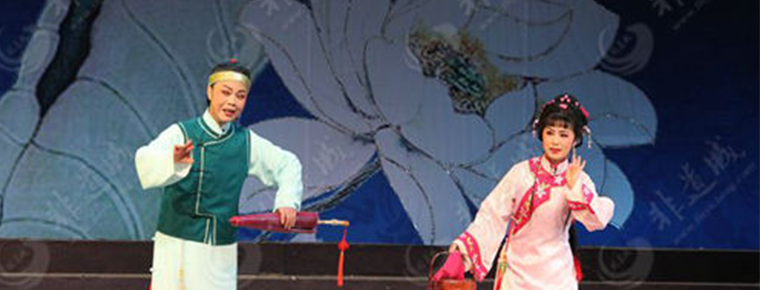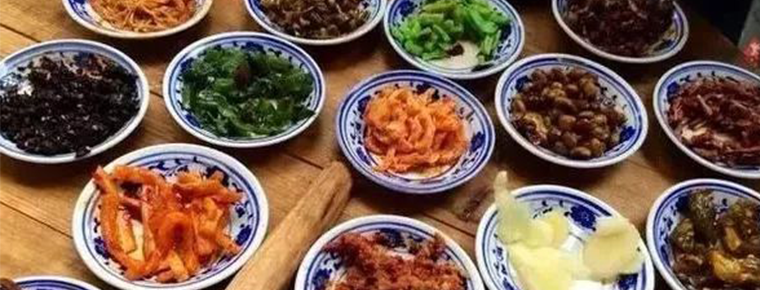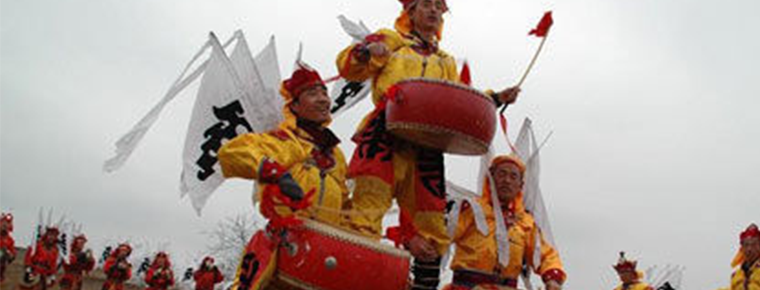Luoji Mountain Scenic Spot
Luoji Mountain Scenic Spot
Luoji Mountain scenic area is located in Puge County, Sichuan Province, with a total area of 2400 square kilometers, of which the main scenic area is 1083 square kilometers, and the main peak is 4359 meters above sea level.
The name of Luoji Mountain comes from its "sister" relationship with Emei Mountain, "Emei Mountain is like the eyebrow of a woman's silkworm moth, and Luoji Mountain is like a green snail like bun on a girl's head".
geographical environment
Source of scenic spots
Luoji Mountain is a unique natural scenic spot with a thousand peaks and ten thousand schools around the Song Dynasty.
topographic features
When you look far away, you can see the haze and mist in the forest. You can feel the morning and evening blooming when you look at the sky. If you look at the trees and flowers, the azaleas are like the sea, the red is like falling, and the white ginseng is yellow, which is the interest of competing for splendor. The karst caves in the mountains are extremely dangerous, the caves are deep and secluded, the danyan is green, and the stone peaks are steep. There are colorful Haizi lakes, which are bright like pearls and are known as Tianchi. There are also magnificent hot spring waterfalls flowing intuitively. According to ancient books, Luoji Mountain has 72 peaks, 36 Tianchi, 18 scenic spots, 25 Ping and 12 Buddha Caves, with a total of 108 scenes. According to the satellite remote sensing data in 1989, there are more than 58 peaks 4000 meters above the mountain ridge, winding around the fog sea of high mountains. For example, Canglong has traveled for nine days. The concentration of the peaks, the scale, the strange shape and the proximity to the city are rare.
Location of scenic spots
Luoji Mountain is at the junction of Xichang City and Puge County in Liangshan Prefecture.
Main attractions
99 Li in Luoji
Enjoy the world's largest hot spring waterfall in Luoji, Xichang
Luoji · 99 Li is located 39 kilometers south of Xichang City, the capital of Liangshan Prefecture. It is a national key scenic spot and a national 4A tourist attraction. Luoji 99 Li is the most concentrated area of Luoji Mountain scenic spots. It is the core scenic spot of Luoji Mountain. Together with Qionghai wetland and Lugu Lake, it is called the three essential scenic spots in Liangshan Prefecture. The core scenic spot is ninety-nine Li long, with one scene per mile, so it is named luoji.99 Li. Luoji · 99 Li consists of four landscape groups: Baipu Valley, Luoji first peak, cloud top and primitive forest. Baipu Valley is natural, with lush trees, beautiful flowers and trees, different stones on Lingya and waterfalls and flowing springs. There are groups of waterfalls with different shapes, such as rainbow waterfall and peacock waterfall. The 99 mile hot spring waterfall in Luoji Mountain is one of the five wonders of Luoji Mountain.
Remains of ancient glaciers
Luoji Mountain is a rare and complete quaternary ancient glacier Natural Museum in the known mountains of China. The ancient glaciers in ancient glacial relics, such as corner peak, blade ridge, valley, ice bucket, ice erosion depression, glacial moraine lake, ice ridge, ice terrace, ice slide surface, glacier groove, yangbei stone, Pangu, iceberg mountain, sidemoraine, etc., have high value of tourism, exploration and scientific research. The glacial moraine lake is the most spectacular of them. The glacial moraine lake in Luoji Mountain is distributed in the ice enclosure and ice bucket at all stages above 3650m. According to incomplete statistics, there are 50 remaining lakes with water accumulated all year round or oval shape, with the width of water surface of mostly 2300 meters and the depth of lake water generally being 78 meters. The bottom of the lake is mostly covered by huge stone strips and slabs, and some of them are bare footstones. The bottom of the lake is dominated by rock blocks and sand debris. Some lakes have Peninsula or lake island extending into. There are a lot of ice erosion and moraine around all lakes. The lake water is green blue, brown red, brown yellow, grass green and dark green due to the different color of bedrock, vegetation or saprophyte around the lake, and water grass in the lake. The main lake scenery with the significance of investigation and sightseeing includes Pearl Lake Group, colorful Lake Group, Dacui lake, sister lake, Ganhaizi, Huanglong lake, Heilongtan lake and hot spring waterfall.
Luoji Mountain
Luoji Mountain has high terrain, obvious vertical climate zoning, few people and unique closed geographical environment. There are many kinds of primitive forest, rare animals, wild flowers and fungi. The original forest covers an area of more than 300000 mu. The plant species include subtropical vegetation, subtropical coniferous forest, subtropical evergreen broad-leaved forest, subalpine coniferous forest, etc. there are more than 180 families and more than 2000 species, including more than 30 species of rare plants that are the first batch of national protection. Rhododendron (also known as "soma flower" in Yi language) is the most wild flower. There are more than 30 kinds of wild flowers. From March to July every year, the flowers are colorful and cover the earth. Moreover, many rhododendrons have not been cut down because they have been growing for thousands of years. They have grown into big trees that can only be surrounded by one or two people. In addition, some Rhododendron can bloom at the same time with a variety of different colors of flowers, which is more attractive, competing for fragrance, with high ornamental value. In terms of fungi, there are more than 150 kinds of large-scale straight fungi, 80% of which can be edible and medicinal. There are nearly 400 species of higher animals, including more than 60 species of mammals, 252 species of birds, 19 species of reptiles and 26 species of amphibians, which are rare and under the state's key protection. For example, there are more than 30 species of rare and national key protected animals, such as macaque, red panda, golden cat, forest musk deer, red deer, pangolin, red bellied Tragopan, golden pheasant, grey headed Parrot, round hazy tooth toad, Baoxing Shuwa, Daliang newt, Dongpo cuttlefish, etc. Luoji Mountain is a rare biological resource "gene bank" in China because of its abundant animal and plant resources. It is not only of high ornamental value, but also an important scientific research base.
Luoji Mountain was once an early Buddhist holy land in China. Since the beginning of the Han Dynasty, Buddhism has been popular in the Tang Dynasty (Luoji Temple alone had more than 3000 monks in its heyday). Many temples have been built, and the site is still alive. After the end of the Tang Dynasty, because of the war and other reasons, Buddhism declined day by day, so there are the saying that "the Luoji Mountain is opened, and the Emei Mountain is closed". Buddhists call Luoji Mountain "Ziwei". From the beginning of Qing Dynasty to Daoxian period, temples rose gradually. According to records, only in the Western foot of Luoji, there are the larger temples of Caotong school, two pavilions and thirteen temples. Luoji Mountain is called fairyland by Buddhism because of its clear water, misty clouds and endless landscape.
The climate of Luoji Mountain is quite different. "Ten li is different from the sky". The original forest is well preserved. It not only preserves some exotic creatures that are often extinct in the world, but also preserves the complete and the largest ancient glacier groove site in the world. It has the reputation of "Xizi thick Ru, Emei light wipe, Luoji born". It has attracted many tourists to travel thousands of ways, visit and browse Find its infinite mystery. Luoji Mountain will surely shine like other famous mountains in China.
Honor of scenic spot
In April 2020, it was selected into the "2020 Chinese summer resort list".
Tourism information
admission ticket
Tickets 65 yuan (60-69 years old and students with valid certificates can buy a discount ticket of 35 yuan, height of 1.2-1.5 meters, children under 6 years old and over 70 years old can be free of charge), Ferry Bus (round-trip) 21 yuan / person, insurance 4 yuan / person; cableway ticket (round-trip) 130 yuan / person, students with certificate can buy 100 yuan / person, 1.2-1.5 meters children can buy discount ticket 80 yuan / person, children under 1.2 meters can buy discount ticket 80 yuan / person, children under 1.2 meters can take Cableways are free.
Opening Hours
Holiday (7:30-15:30), cableway ticket (8:00-16:30);
Non holiday (8:00-15:00), cableway ticket (8:30-16:00).
Traffic information
Take the coach to Puge in Xichang tourist center
(1) Get off at LuoJishan town (fare 16 yuan) and walk up the mountain;
(2) Get off at the hot spring Waterfall (the fare is 16 yuan) and walk to the entrance of the scenic spot.

-
Park hyatt Guangzhou
In Guangzhou Park Hyatt Hotel, a traditional Lingnan culture and Gourmet Tour is opened. Guangzhou Baiyue Hotel integrates Lingnan's long history and culture with Baiyue's delicate modern .
Views: 160 Time 2018-12-16 -
Sun Yatsen Memorial Hall
Zhongshan Memorial Hall is located in Dongfeng Middle Road, Yuexiu District, Guangzhou City, Guangdong Province. It was built by the people of Guangzhou and overseas Chinese to commemorate Dr. Sun Yat.
Views: 147 Time 2018-12-22 -
Buddhist Cultural Tourist Area of Great Buddha and Zen Temple
As the first door to worship Mount Emei, the Buddha Zen Temple is the first stop to pray and worship in Emei, and it is also a must-go place. The Grand Buddha Temple, formerly known as the Grand Buddh.
Views: 157 Time 2019-01-06 -
The Great Wall Site of Qin Dynasty in Ningxia
The site of the Great Wall of King Zhao of Qin Dynasty was built in the twenty-fifth year of King Zhaoxiang of Qin Dynasty (272 BC). It was built to defend against the invasion of the Huns in the sout.
Views: 119 Time 2019-02-07 -
Bo Ba Shen en
Bobassengen is a unique folk large-scale narrative mass pot village dance created by Ganbao Tibetan Village in Jiarong Tibetan area, Lixian County, Sichuan Province. "Boba" .
Views: 389 Time 2019-04-04 -
Lake Opera
Huzhou Tanhuang, originally known as Huzhou Tanhuang, is a traditional local opera. It is mainly popular in Huzhou, Jiaxing, Yuhang and Linan of Hangzhou, Wujiang and Yixing of Jiangsu, Guangde of Anh.
Views: 118 Time 2019-05-03 -
Making Techniques of Pickled Vegetables
Making pickles, the traditional skills of Beijing Liubiju Food Co., Ltd., is one of the national intangible cultural heritage..
Views: 107 Time 2019-05-06 -
Luochuans drums
Luochuan Yigu, a traditional dance in Luochuan County, Shaanxi Province, is one of the national intangible cultural heritage..
Views: 145 Time 2019-05-15 -
Miao Batik Dyeing Techniques
Batik dyeing is one of the ancient folk traditional printing and dyeing techniques of the Chinese nation. As early as the Qin and Han Dynasties, the Miao people had mastered batik dyeing techniques, a.
Views: 381 Time 2019-06-05 -
Convenient facilities and medical services of Chengdu Giant Panda Base
Chengdu Research Base of giant panda breeding has a tourist service center in the hall on the first floor of the museum, which can provide free convenience services such as microwave heating, drinking water hot water, baby carriage, wheelchair, walking stick, umbrella, needle and thread bag, etc..
Views: 385 Time 2020-12-13 -
Honor of Neijiang City
On June 9, 2020, it was awarded the advanced municipal Party committee and government of Sichuan Province in promoting the development of service industry..
Views: 304 Time 2020-12-16 -
Animal resources in Yibin
There are nearly 1000 species of vertebrate resources in Yibin City. Among them, there are 70 species of mammals in 23 families; 306 species of birds in 16 orders, 46 families; 34 species of reptiles in 2 orders, 9 families; 29 species of amphibians; and 151 spe.
Views: 351 Time 2020-12-18

